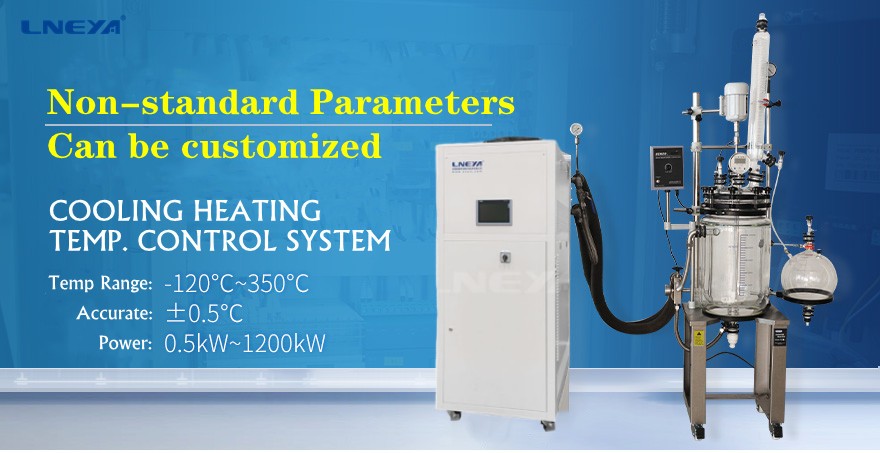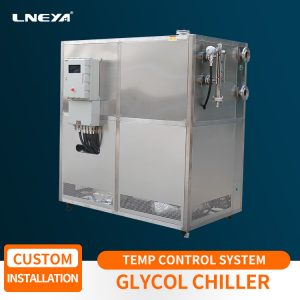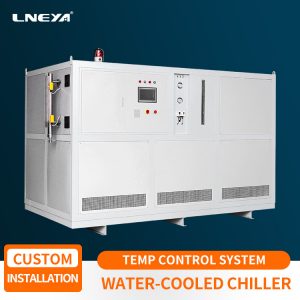Temperature control instructions for stainless steel reactors and glass reactors

Reactor is a kind of reaction equipment in industrial production. It generally needs to be refrigerated or heated. Whether the temperature is suitable or not directly affects its reaction effect. Therefore, if conditions permit, it is generally equipped with a reactor temperature control device. The temperature control device of the reaction kettle uses the conversion of heat conduction oil to heat the material to be heated. Inferior heat conduction oil has a short service life and is prone to scaling. Impurities will decompose under high temperature conditions, and the temperature cannot rise. There is water vapor It will cause more fuel injection. Generally, it is advisable to control the temperature of the reaction solution within 30-300°C for the electric heating reactor. Furthermore, the double-layer glass reactor can choose the corresponding low-temperature refrigeration cycle system for refrigeration, and the low temperature can reach -120°C. Heating can choose water vapor, hot water, heat transfer oil and other heat carriers, and the high temperature can reach 300 °C. Another example is that the temperature of the enamel reaction kettle is 200°C, so the temperature of the material in the kettle is not allowed to exceed this temperature.
Most temperature control applications involve stainless steel reactors, which are more durable, and glass reactors, which allow the user to observe the reaction process inside the reactor. There are many precautions to consider for the safety of glass reactors. Typically, a reactor has an internal cavity in which materials requiring temperature control are stored. The inner cavity is surrounded by a jacket that can be connected to heat-conducting oil, and the temperature control system is connected with the jacket of the reactor. In order to control the temperature of the reactor, the thermal oil is heated and cooled in the temperature control equipment. The temperature control system of the reactor continuously pumps the heat transfer oil into the jacket of the reactor through the circulation pump. Sudden temperature changes inside the reactor will be compensated by rapid heating and cooling of the temperature control equipment to achieve dynamic equilibrium.
Temperature control uses water circulation or oil circulation for temperature control, and the connecting equipment must have flow channels and interlayers. In industry, wherever temperature is required, temperature control is required. Our LNEYA cooling and heating temperature control system can basically be used for temperature control in the above industrial processes. The temperature is from -120~350℃. Plate heat exchangers and pipeline heaters are used to increase the temperature control rate, high-efficiency production stability and repeatable results, providing dynamic constant temperature control of cold source and heat source, fully enclosed system, reducing the demand for heat transfer fluid and increasing the heat of the system utilization rate.
Recomendaciones relacionadas
-
La fábrica de enfriadoras de tornillo con ruido debe ser revisada y reparada a tiempo
1513Before we use an industrial screw chiller factory, we will check all aspects of it, such as parts inspection, configuration, noise, and so on. What should I do if there is noise in the screw chiller during use? Do I need someone to repair it? The ...
Ver detalles -
Precautions for the Placement of Industrial Air Cooled Chiller
2309The quality and use of industrial air cooled chillers are very important. At the same time, the user operation cannot ignore the position placement. Only the correct position placement and high-quality equipment can achieve high-efficiency operati...
Ver detalles -
What should I pay attention to when choosing an evaporator for an ultra-low temperature chiller?
1604The evaporator in the ultra-low temperature chiller is one of its four major components, so performance is more important. The selection of ultra-low temperature chillers needs to pay attention to the influence of liquid level on the evaporation t...
Ver detalles -
Instrucciones de mantenimiento del condensador circulador de refrigeración a ultra baja temperatura
2089El mantenimiento es una tarea importante para los usuarios de termostatos de refrigeración de temperatura ultrabaja. Wuxi Guanya LNEYA recuerda que el mantenimiento del condensador es una tarea relativamente importante en su trabajo de mantenimiento. Por lo que se debe prestar atención...
Ver detalles
 LNEYA Enfriadoras industriales Fabricante Proveedor
LNEYA Enfriadoras industriales Fabricante Proveedor













